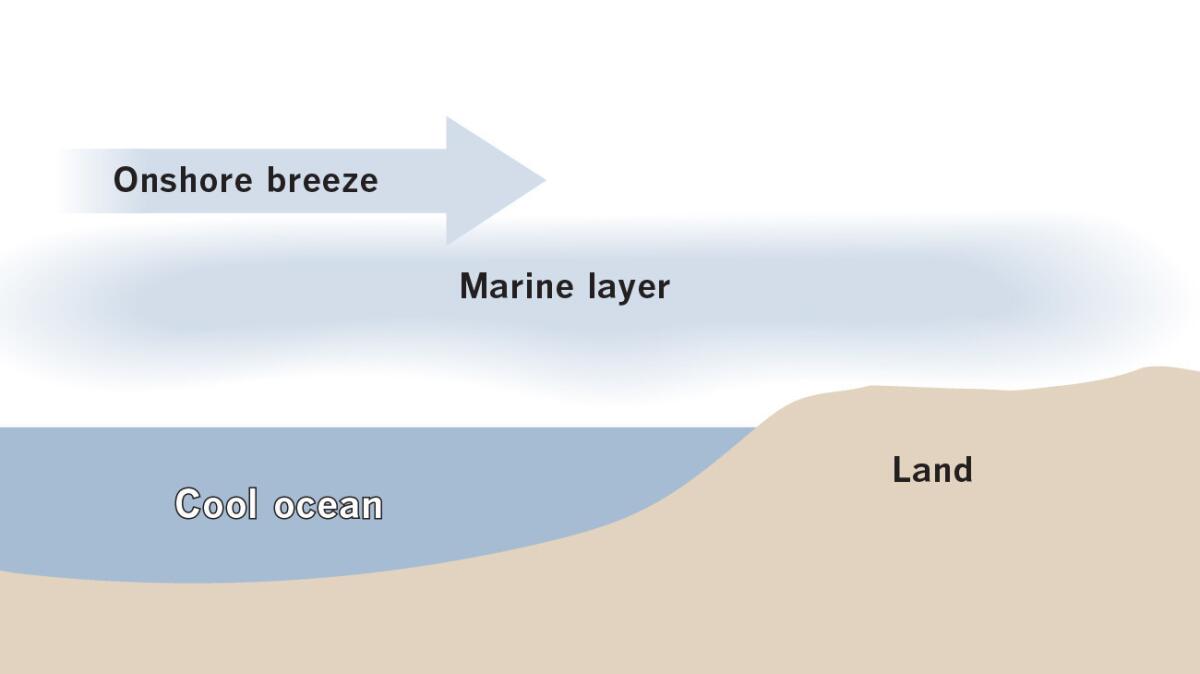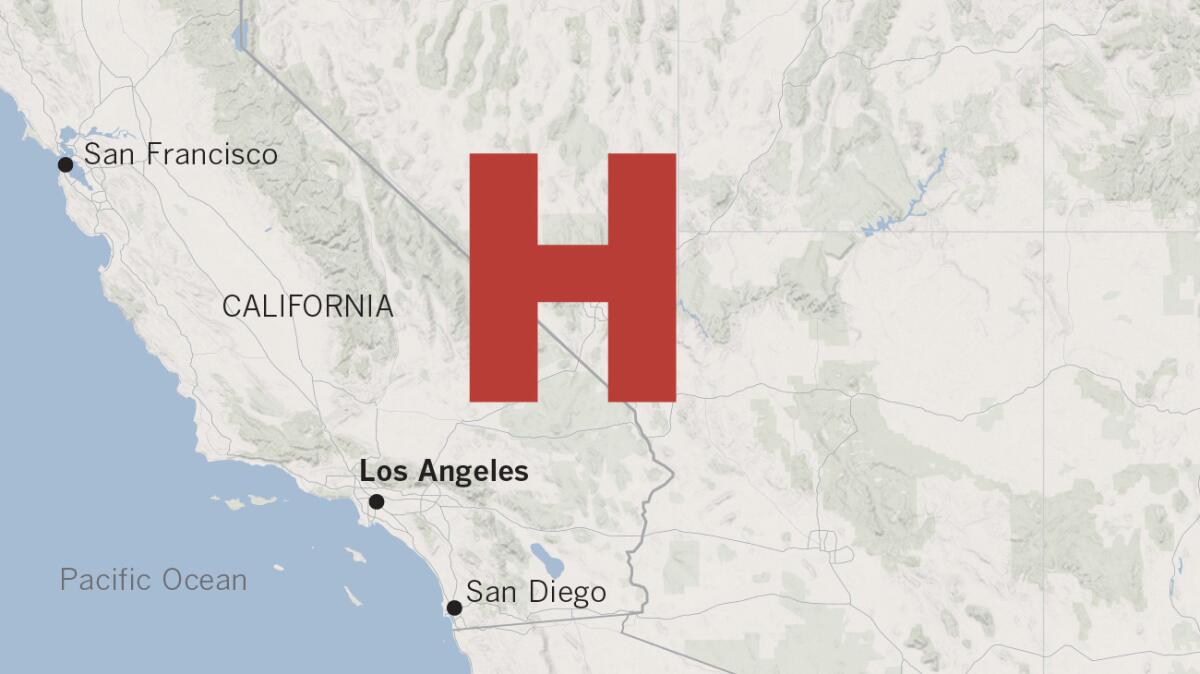There’s a reason it’s gray when we wake up; we call it June gloom
- Share via
Geography, ocean currents and weather patterns typical for this time of year combine to cause the gray and dreary Southern California phenomenon we call “June Gloom.”
Sometimes the phenomenon occurs a little earlier and we call it “May Gray.” Sometimes, occurrences of similar conditions arrive later in the season and are referred to as “No-Sky July” and “Fogust.”
However, the weather pattern remains mostly confined to the late spring and early summer months.
Here’s a look at how the phenomenon brings gray mornings and occasional drizzle to the coast.
1. Weather systems converge off the coast
Low pressure in the Gulf of Alaska and the Pacific Northwest promotes strong westerly to northwesterly winds along the West Coast, while high pressure lies to the east of California.
The California Current, which flows from north to south along the coast, and upwelling caused by strong winds, ensure that the waters off California remain relatively cool.

2. Heavy marine layer meets a cool onshore breeze
Those cool coastal waters produce a heavy, moist marine layer. An onshore breeze throughout most of May and June pushes that marine layer inland.

3. Catalina eddy pays a visit
Northwest winds slow down south of Point Conception and turn toward the Southern California coast during the morning hours. A counterclockwise spin called a Catalina eddy develops.

4. Low clouds and drizzle
This eddy behaves much like a low-pressure system, and its air becomes moist with water vapor. The moist air continues to rise and condenses into low clouds. We may start to see drizzle.

5. Putting a lid on it
Meanwhile, the moist, low-hanging clouds become trapped beneath an inversion layer of warmer air, which acts like a lid or cap.
This lid may sit at about 3,500 feet. It can become stronger because of the difference in temperature between air above it and below it, or the warmer inland temperatures during May and June.
Depending on the depth of the marine layer, the clouds usually dissipate as the day progresses.

6. Gray mornings give way to blue summer skies
Generally, by July, high pressure builds over Southern California and the winds out of the Pacific Northwest over the ocean diminish. This change helps to make the inversion — or lid — shallower or eliminate the marine layer altogether.

Sources: Eric Boldt, National Weather Service Los Angeles/Oxnard; Times reporting
ALSO
Californians need to be so afraid of a huge earthquake that they take action, scientists say
One of South Africa's top tourist destinations is almost out of water
A devastating cycle of fire, record rain and huge landslides batters California's Central Coast
Sign up for Essential California
The most important California stories and recommendations in your inbox every morning.
You may occasionally receive promotional content from the Los Angeles Times.








